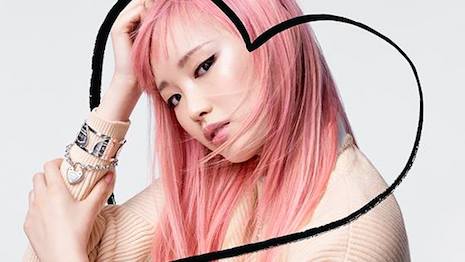- About
- Subscribe Now
- New York,
December 4, 2017

 Tiffany & Co. has gained millennial love. Image credit: Tiffany
Tiffany & Co. has gained millennial love. Image credit: Tiffany
Across most product categories, affluent millennials are largely divided on their favorite luxury brands.
According to a new report from MVI Marketing, while labels such as Rolex, Jimmy Choo and Tiffany & Co. resonate strongly with this generation in their respective verticals, the most popular brands in categories such as fashion and handbags won by smaller margins. Where there were no clear leaders, luxury brands have a greater opportunity to win favor with this important consumer base.
"[Luxury brands'] old consumer is dying," said Marty Hurwitz, CEO of MVI Marketing. "Demographically, their old consumer is pretty much at the end of their spending cycle, so they need to capture this next consumer wave to continue or even grow their businesses.
"This [millennial] demographic is going to be bigger than the baby boomer demographic, and invariably have more spending power as the years go on," he said. "These brands have to capture the imagination of this new consumer, and they know that."
MVI Marketing surveyed 978 U.S. respondents between the ages of 25 and 40. Participants included both male and female consumers with household incomes of at least $80,000.
Brand fans
In luxury fashion, Michael Kors, Coach and Kate Spade were the three top brands for female respondents. However, only a few percentage points separated these labels.
The same trio also topped the rankings of handbag brands, with Coach taking the lead followed by Michael Kors and Kate Spade.
While accessible labels came out ahead of more traditionally luxury-priced brands such as Louis Vuitton, Chanel and Gucci in apparel and handbags, shoes was a different story. Here, Jimmy Choo was the clear favorite, particularly among women with household incomes of $200,000 or more.
Jimmy Choo is popular among millennial women. Image credit: Jimmy Choo
In footwear, Christian Louboutin, Gucci and Louis Vuitton followed Jimmy Choo.
"We definitely found in those categories that the lower income segments were picking really affordable luxury brands or entry-level luxury brands, which would suggest to me that as they get older and their disposable income gets higher that they would then aspire to something more traditional, more higher priced minded luxury," Mr. Hurwitz said. "When we tabulated those categories, you can see in the upper income brackets that there was more of an interest in the more expensive brands."
Tiffany’s efforts to attract a millennial audience through marketing and product design appear to be working, with the jeweler the most favored brand in its category. Millennial women also showed an affinity for Cartier, Pandora and Chanel.
Millennial men voted for Rolex as their favorite watchmaker. Indicative of Apple’s disruption of the luxury industry, it came in second place behind the maker of mechanical timepieces.
Even beyond millennials, Apple has found a market, with the tech company’s Apple Watch surpassing Rolex in popularity (see story).
After Apple were more traditional watchmakers, including Omega, Cartier and Tag Heuer.
A combined audience of male and female respondents put the Ritz-Carlton brand ahead of J.W. Marriott, Four Seasons and Waldorf Astoria.
"The Marriott Corporation has become a big producer of video content on YouTube and all over the Web, very engaging, entertaining, non-promotional video content that really is terrific stuff to watch," Mr. Hurwitz said. "And I believe that has really helped them pump up acceptance of J.W. Marriott among their consumers.
"They’ve become literally almost a TV company in their own right with how much production they do, and I think it’s really paying off with the younger consumer," he said. "Speaking to this consumer in the way they are as opposed to talking to them in product terms or category terms all the time or in traditional media markets I think has really been a key to success."
BMW, Mercedes and Audi emerged as the leaders in auto, with male and female respondents favoring the German marques.
Four in 10 millennials are planning to buy a car this year. Image credit: Mercedes-Benz
In eyewear, Gucci was the favorite with a small lead over second-place Ray-Ban. Dolce & Gabbana and Prada also reached the top four.
Millennial mindset
While there is no such thing as a typical millennial, just as there is no archetypal luxury consumer, decoding the next wave of high-end consumption can seem daunting for brand marketers.
While speaking at The New York Times’ International Luxury Conference Nov. 14, a McKinsey & Company partner summarized how millennials generally act and explained that the demographics’ behavior ripples through to older consumer segments. Born between 1981 and 2000, or ages 18 to 35, millennials make up 30 percent of the global population and primarily live in emerging markets, creating a enormous potential for luxury brands (see story).
Despite portrayals of the millennial generation as anti-luxury, a study found that most women in this age group would prefer having fewer items that are of a higher quality.
The Diamond Producers Association’s “What Women Really Want” survey found that 64 percent of millennial women would rather purchase a single luxury item over many less expensive pieces. According to the report, these consumers look at luxury, including jewelry, as an investment in themselves and look for the real deal over knockoffs (see story).
"This is really the beginning of the consumer spending wave for this demographic, and really the most income is being made on the coasts, either San Francisco and Los Angeles or New York and Washington, because that’s where the jobs are for the higher income millennials," Mr. Hurwitz said. "But it’s a 30-year spending cycle that’s just beginning now.
"If [brands] can get them in now with an entry-level price point maybe in eyewear or something like that, this is a possibility they can be with them for a long time."
Share your thoughts. Click here